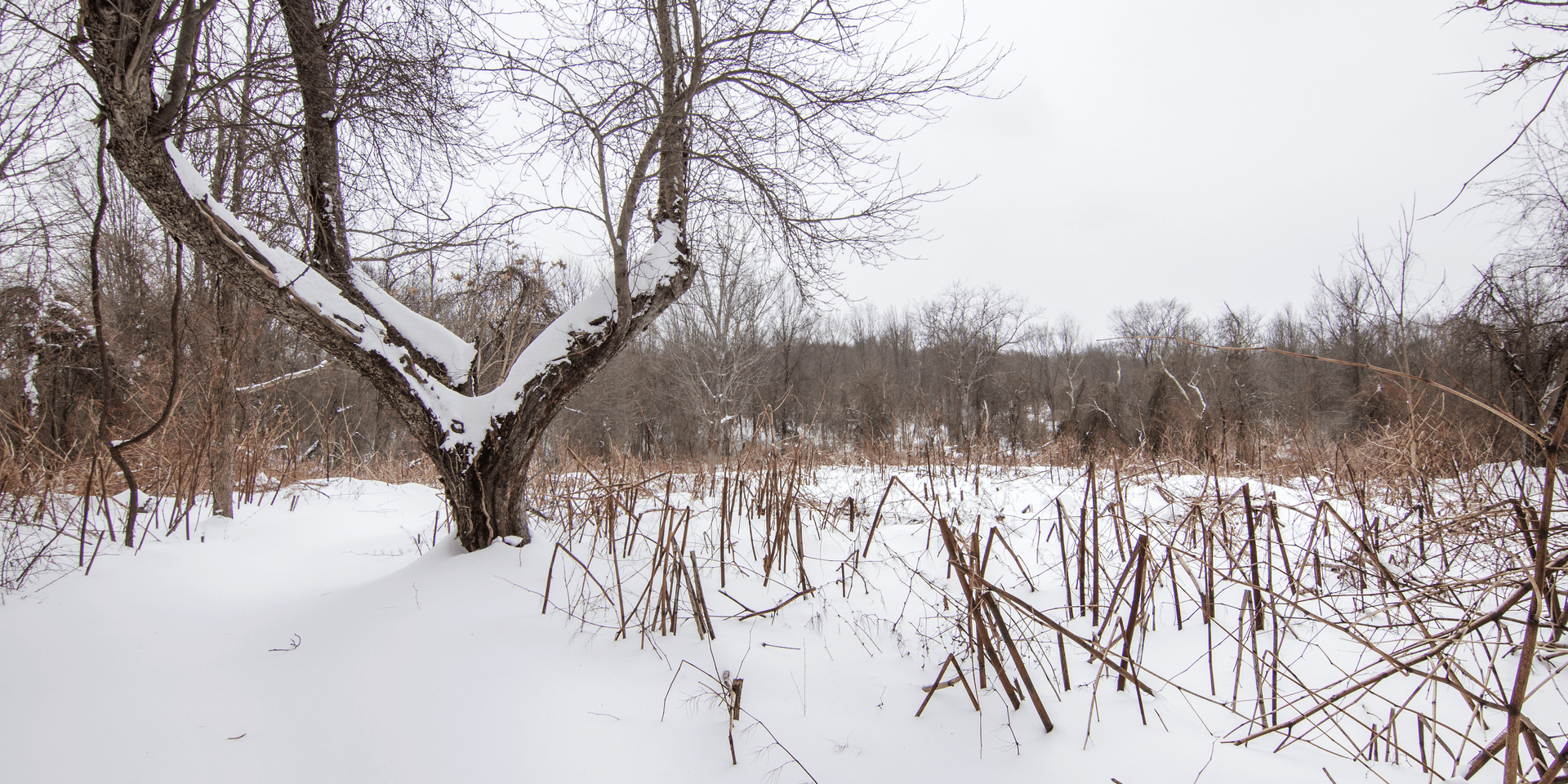You are here
Stewart State Forest is a 6,700-acre (27-km2) area of land complete with a mix of wetlands, fields, swamps, and forest. It holds over 18-miles of gravel roads and more than 22-miles of major trails for hiking, biking, horseback riding, hunting, dog training and trials, cross-country skiing, snowmobiling, bird watching and fishing. There are multiple access points and many connecting trails, making it easy to explore different parts of the park. The Scofield Trail begins at the intersection of Ridge Road and Maple Avenue, and it has a kiosk designating the trailhead.
Scofield is lined with yellow trail markers and begins through a short section of woods until reaching a large open area. From here, you will see marsh lands through the tress to the east. The trail ascends back into the forest and passes through several sections of tall reeds. After a little more than a mile, the path reaches a high point and comes to an intersection with Scofield Lane. Make a sharp left to the east that will continue downhill to the water.
One of the new features of the park is a boardwalk that traverses the marsh and connects this trail to Great Swamp Road. This is a premier location for observing wildlife with over 60 species of birds, 42 mammals, 15 salamanders and frogs, and 11 reptiles including the threatened pied-billed grebe and endangered Indiana bat. The road will connect to Maple Avenue, a gravel road, and heading north, toward the sounds of I-84, will lead you back to the starting point.
Stewart State Forest is one of the more recent additions to New York State. In the 1970s, the nearby Stewart Airport was anticipated to be New York City’s fourth major airport. To accommodate the expansion, 337 houses and 1,200 people were bought out of their former farm land. It was saved from planned development by a lawsuit, filed in 2000, by the Stewart Park and Reserve Coalition, an active network of local park users. Today, you will see crumbling foundations, old stone walls, and massive planted oaks and Norway spruces scattered along the paths and roads.
The park is owned and run by the New York State Department of Environmental Conservation (DEC). It is closed to the general public during big-game season, from about mid-November to mid-December. Unless specifically posted as foot trails, all trails on the property are multiple use trails.
Here is a list of the trails posted and described by the DEC:
- Maple Avenue to Weed Road travels through meadows, old farm woodlands and fields. 1.3 miles.
- New Road to Barron Road South travels through farm fields, woods and 2 ponds. 2.9 miles.
- New Road to Barron Road North travels through dry woods, cedars, pines and under power lines. 1.3 miles.
- Orlando to Barron Road travels through wetlands, moist woods and under power lines. 1.3 miles.
- Pittman-Robertson Pond Road travels along a one-lane farm road, fields, a pond and through woods. 1.0 miles.
- Windsor Woods to Ridge Road travels along an old road through woods. Seasonal flooding. 1.2 miles.
- Windsor Woods to New Road travels through deep woods and hemlocks. 2.0 miles.
- Scofield Lane Trail travels through disturbed woods and on a ridge above a swamp. 2.0 miles.
- Raincoat Factory/Lindsay Road Loop travels through woods, fields and near two ponds. 1.4 miles.
- Restoration Pond and Beaver Pond Farm Lane is for vehicles by permit. 0.8 miles.
- Buchanan Hill Trail includes the highest point in this forest at 658 feet and travels through fields and forest with views and a pond. 1.8 miles.
- Armstrong Lane wetland and farm trail travels through a wetland and former farm woods. 0.5 mile.
Logistics + Planning
Current Weather: Powered by Dark Sky
























Comments
Sign In and share them.